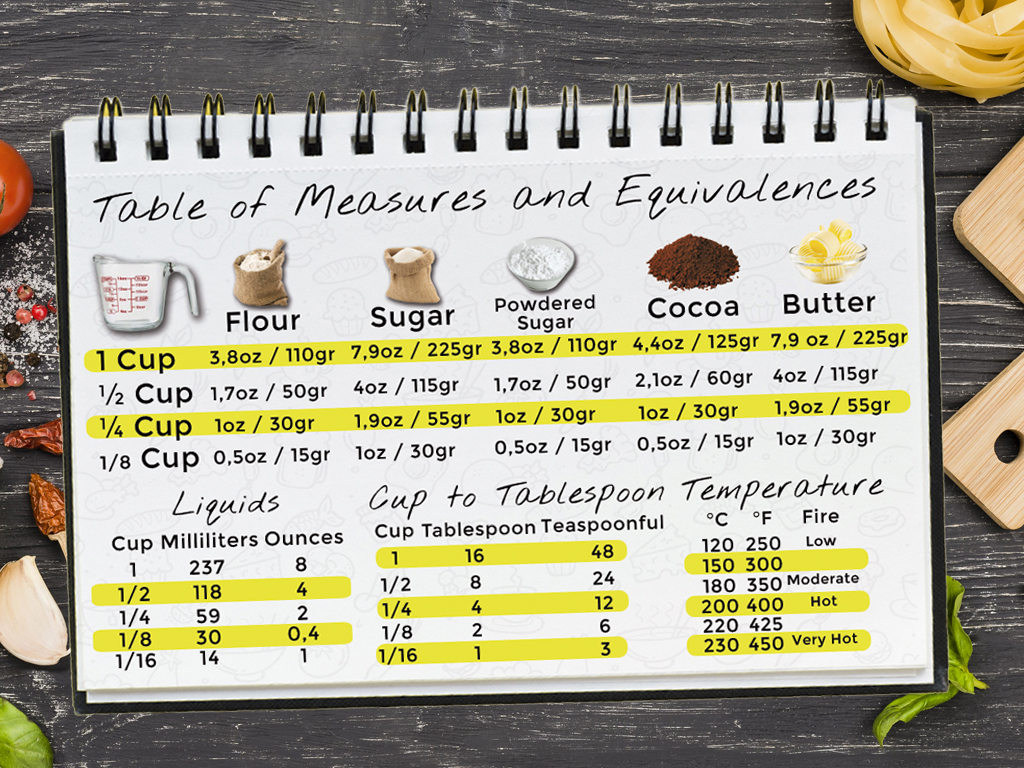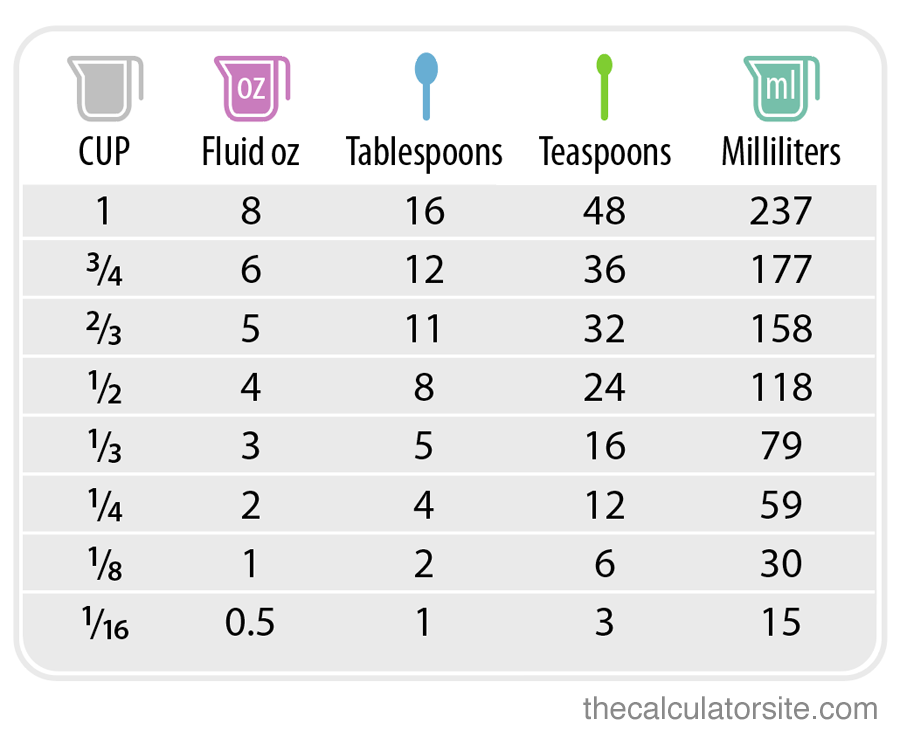

You can also resort to tablespoons and rely on our calculator to recommend the right amount of grounds for your serving size. One way to get around the constant need for a kitchen scale is to try out scoops until you find the one that works well for your pour-over device and bean of choice. But it isn’t always the most convenient of devices, especially if you need a constant supply of coffee in the office.
#10.5 tablespoons to cups full
Either way, you’re looking at a cuppa (or worse - a full carafe) of ruined brain juice.Ī kitchen scale is a vital investment if you want to master pour-over brewing. If you miscalculate and use too much coffee, the brew will taste bitter because of over-extraction. If you don’t use enough beans, the grounds will likely under-extract, resulting in an unpleasant sour aftertaste that will haunt you for the rest of the day.
#10.5 tablespoons to cups manual
While automatic machines are largely immune to errors in judgment on your part thanks to scoops and labels, manual pour-over devices, like Chemex or Hario V60, require precision and patience. Since it all sounds terribly complicated, trust our app to do the calculations for you!īest Brew Ratio for Coffee Filter/Pour Overĭrip brewing methods are among the most sensitive to mistakes in coffee to water ratio. Besides, the water density lets us equal 1 g to 1 ml, and 30 ml makes a fluid ounce. For instance, a ratio of 1:10 means you need 1 gram of coffee for every 10 ml of water. Just remember that the first number of the ratio applies to coffee grounds, and the second one tells you how much more water than grounds you need to use. The table below is for reference only, as the calculator will do all the heavy lifting for you. That’s why we provide three strength options for you to choose from and let you specify the serving size so that you don’t have to remember your multiplication tables. Set your brewing parameters and use the results to make a delicious cuppa every time! MEASUREMENT CHARTĮveryone and their dog has an opinion on the best bean to water ratio for every brewing method imaginable. Thanks to this simple app, you don’t have to guess how many scoops of coffee per cup of the French press to use or calculate how many grams of coffee per cup to grind for a Moka pot. Instead, take a peek and use this coffee calculator to make your life easier. You don’t need to jump into the rabbit hole from the get-go. They are all stuffed with coffee-related appliances and thingamabobs, from coffee makers and grinders to scoops, scales, and descaling solutions. That’s why true coffee nerds have no space in their kitchen cabinets. You can add more or less grounds, but if you go outside the recommended coffee measurements, don’t expect to get drinkable results. You need to brew coffee at a temperature under 200 F, but no less than 185 F. You get to be flexible within certain boundaries.

You will run into difficulties and make mistakes, but it’s all part of the experience, so embrace it!īrewing coffee is also a science. There’s so much flexibility, it can be intimidating at first when you’re embarking on a java discovery journey. You get to choose the strength you need for a morning energy boost or a mid-afternoon pick-me-up.

You get to experiment with optimal coffee brewing temperature and extraction time. You get to play around with single-origin beans and blends to bring out the notes and nuances of aroma and flavor. Why Measuring Matters for a Good Cup of Coffeeīrewing coffee is an art form. For this reason, we recommend you use a kitchen scale and leave tablespoons for the last resort. The bean origin, roast level, and grind setting will all influence the weight of a tablespoon’s worth of grounds. You may think you know that the tablespoon holds around 5 grams of grounds, but that’s true only for some of the beans in your rotation. Measuring coffee by volume is far from perfect. Is it the same as a heaping or level scoop? While using a scale seems like an unnecessary complication to your brewing process, let us ask you a couple of questions. You’ll notice you can get results in grams, teaspoons, or tablespoons of coffee per cup or carafe. Use the results of how much coffee and water to use to brew the perfect cuppa.Choose among three ways to measure how much coffee or water to use (teaspoons, tablespoons, or grams).Select your preferred brew strength (light, regular, or strong).Set the serving size (one cup to full carafe).Specify your favorite brewing method among the seven options.Here’s a quick overview of the calculator’s operation. The time of guesswork is over! Make every cuppa delicious, just the way you like it with a couple of clicks.


 0 kommentar(er)
0 kommentar(er)
